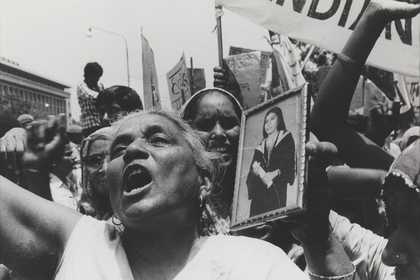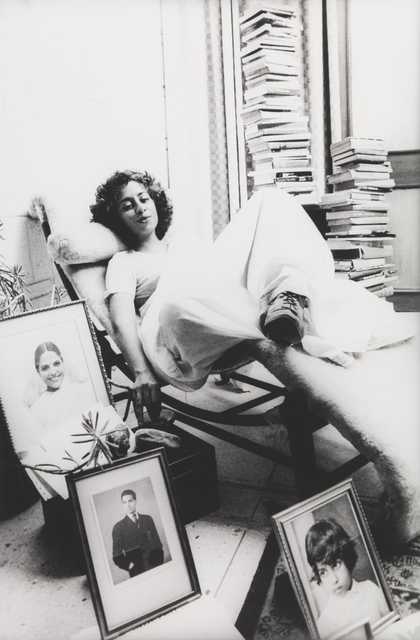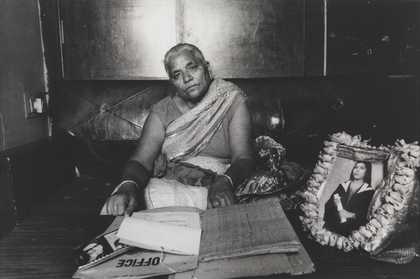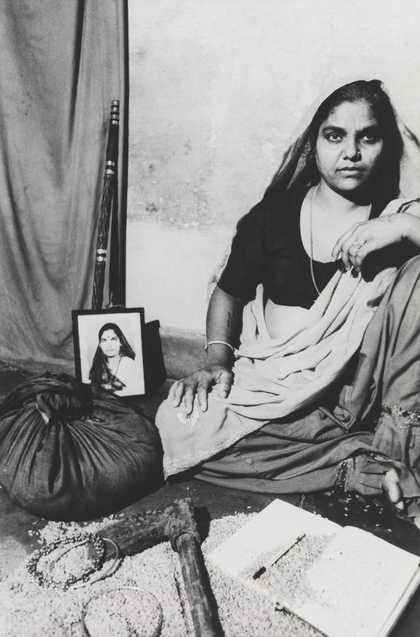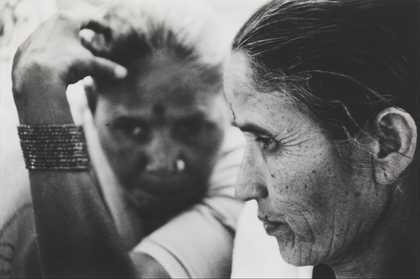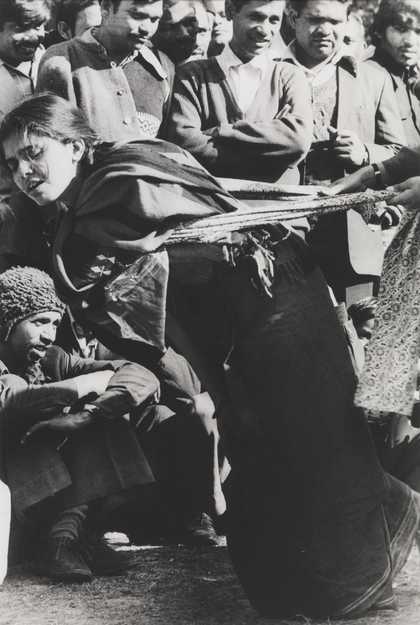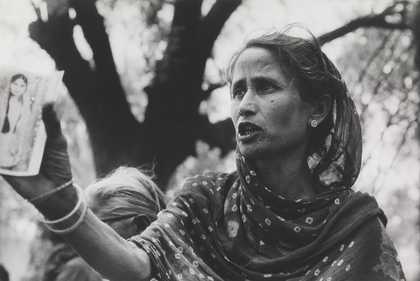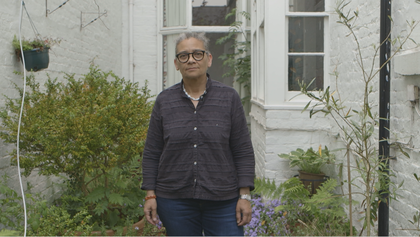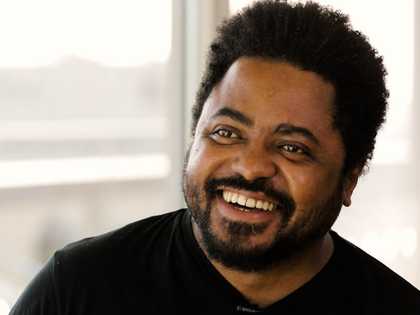My name is Sheba, Sheba Chhachhi.
I'm an artist, writer, thinker and an activist I live and work in Delhi which is a complex, chaotic and very vital place to live.
Today my practice actually is not medium specific but engages with particular social and public issues, primarily feminism and ecology.
It's a desire to offer an alternative imaginary. I started, unusually, in the darkroom. I found the whole process absolutely magical.
From there on, I started photographing with a borrowed camera because I didn't have the money to have my own camera and my very first images were of a woman who lived in a kind of back veranda of a temple that I used to pass every day on the way to Design School.
In a way it was a precursor to my practice which is not at all a kind of parachuting into a situation making images and leaving.
In the early years of the women's movement, I got very passionately involved and was photographing, recording, as well as campaigning and literally shouting slogans one moment and pointing the camera the next.
They were not so many women photographers at the time 'Seven Lives in a Dream', the making of the stage portraits is a significant moment. I was profoundly moved by what I saw by the women I met.
The stage photo gave me an opportunity to alter the balance of power somewhat I worked with seven women asking each one of them to develop with me an image that she felt would tell her story.
She would select a place a posture, a gaze props, objects so we created a kind of missile send.
I see it as that movement; a point of critical transaction in my practice from the documentary to the creation of art.
So my first movement towards that was to take photographs off the walls.
I printed transparent images which were layered across the space. I also combined it with other material, with historical images, with sculptural elements etc.
Working with installation is something that asks you to be extremely rigorous with yourself. It's a very flexible, very elastic form.
What I seek to do is create a kind of embodied viewing where the sensorium of the participant or the viewer participant is engaged, is involved in what is happening.
We are in a kind of period where we are inundated with images, with sounds and I do believe that the kind of crisis we're facing, and we are in deep crisis environmentally and, I think, socially. It's a time of great violence, violence between people, violence between humans and nature.
One thing that makes me feel that it's worth continuing to 'speak', in the sense of making work, is to offer constantly the possibility of other ways of seeing.
These are often drawn from history, they are older epistemologies, older knowledge systems. The work really is about opening up a conversation and trying to invite people to think about things.


